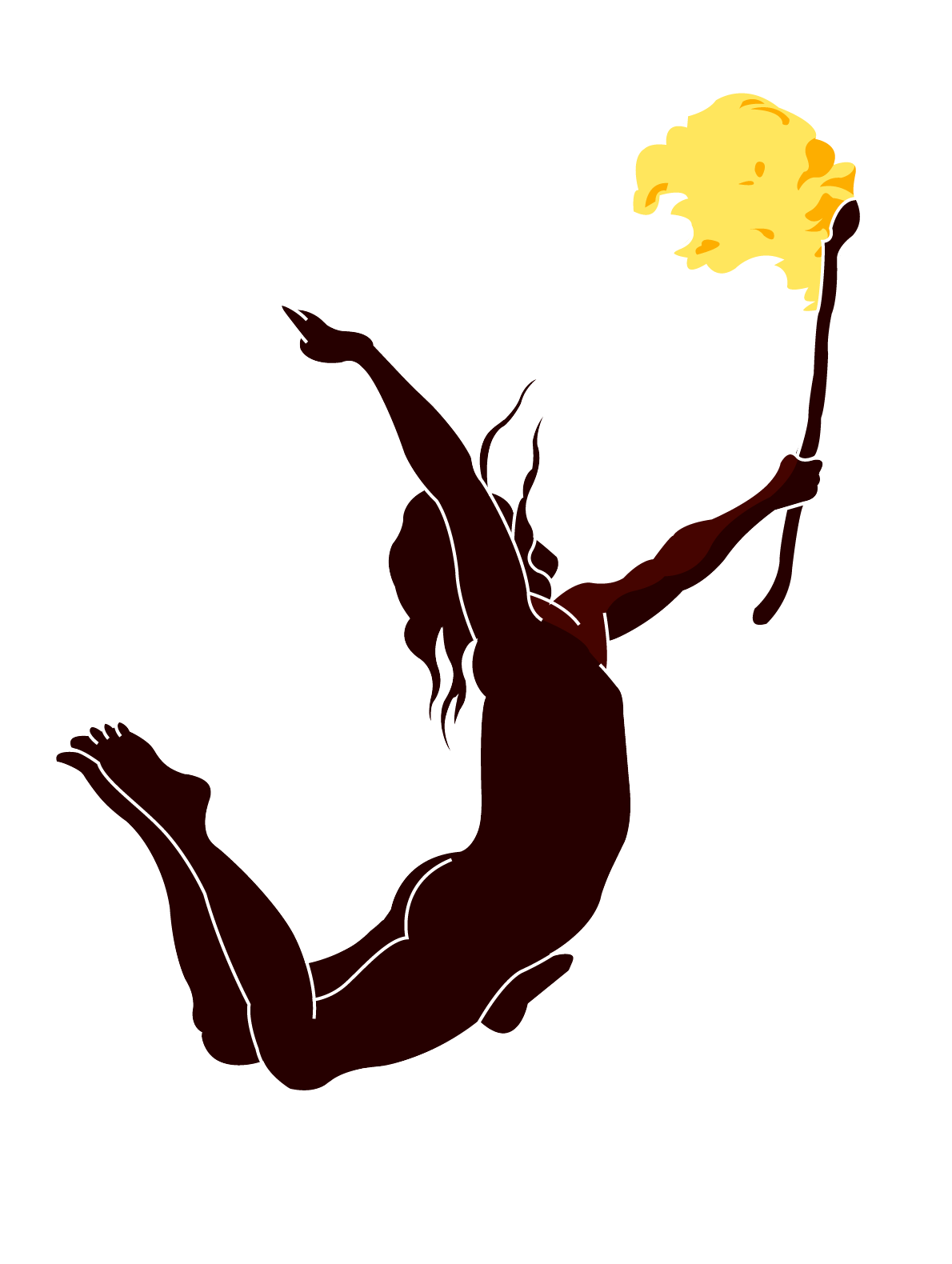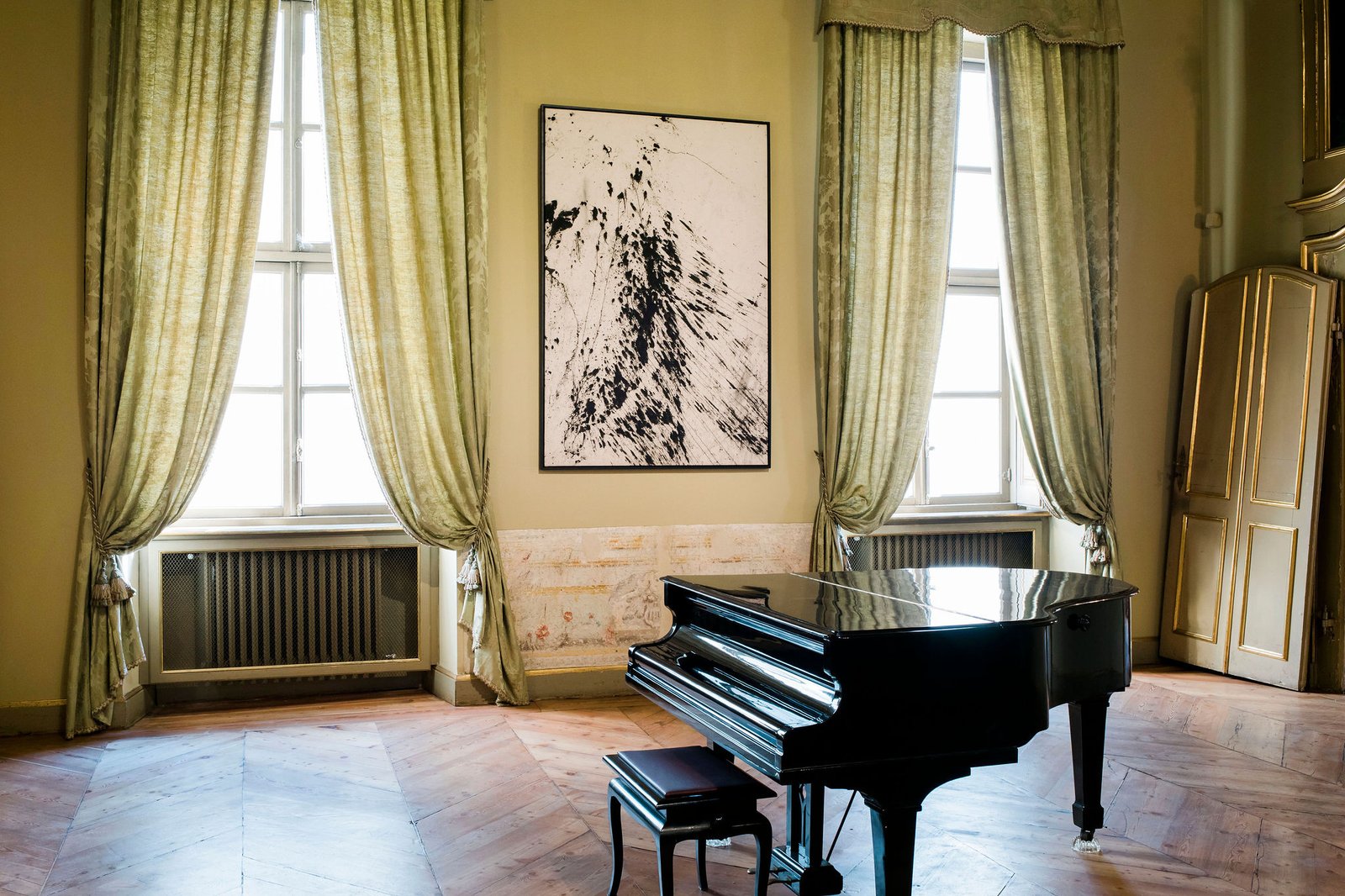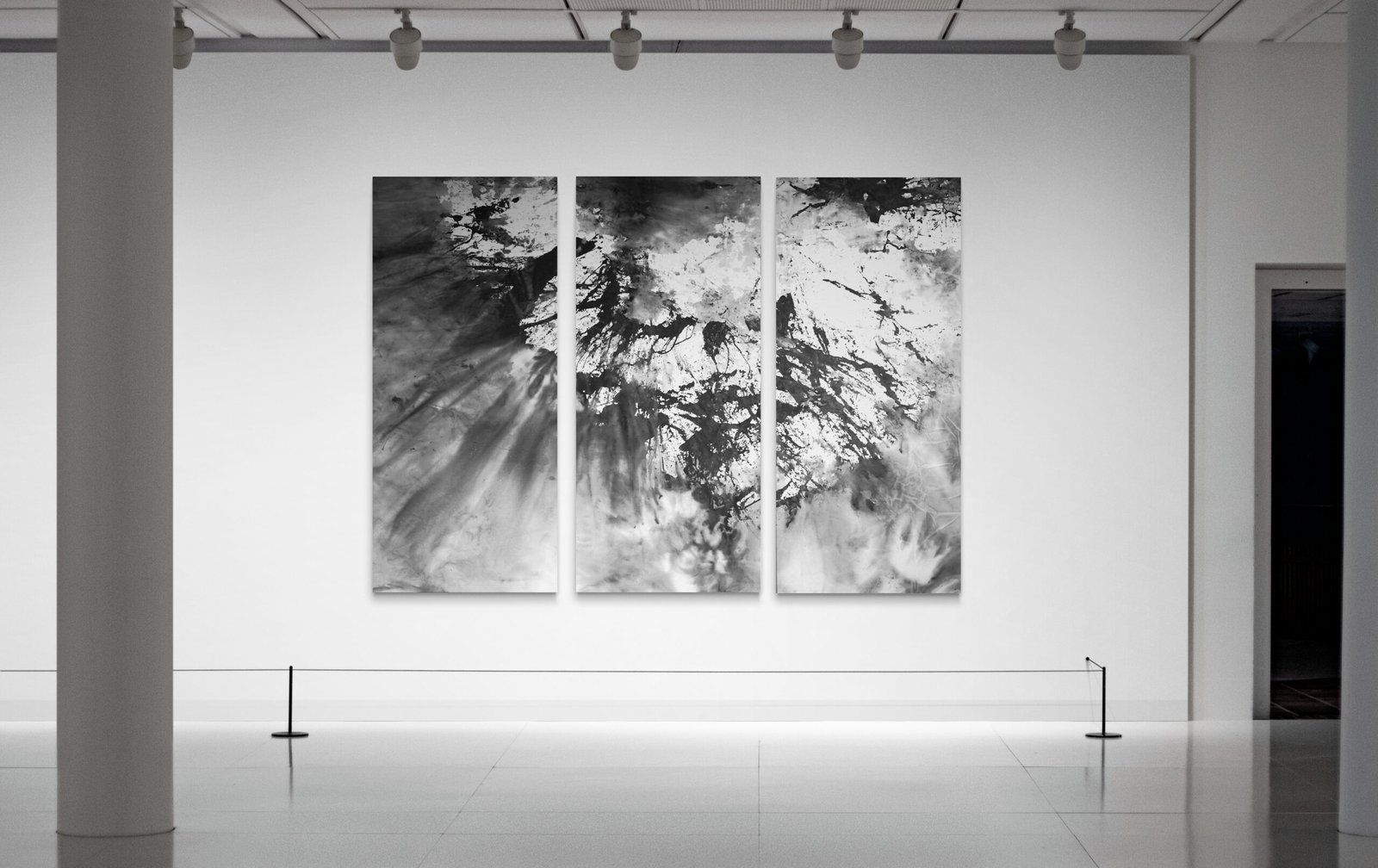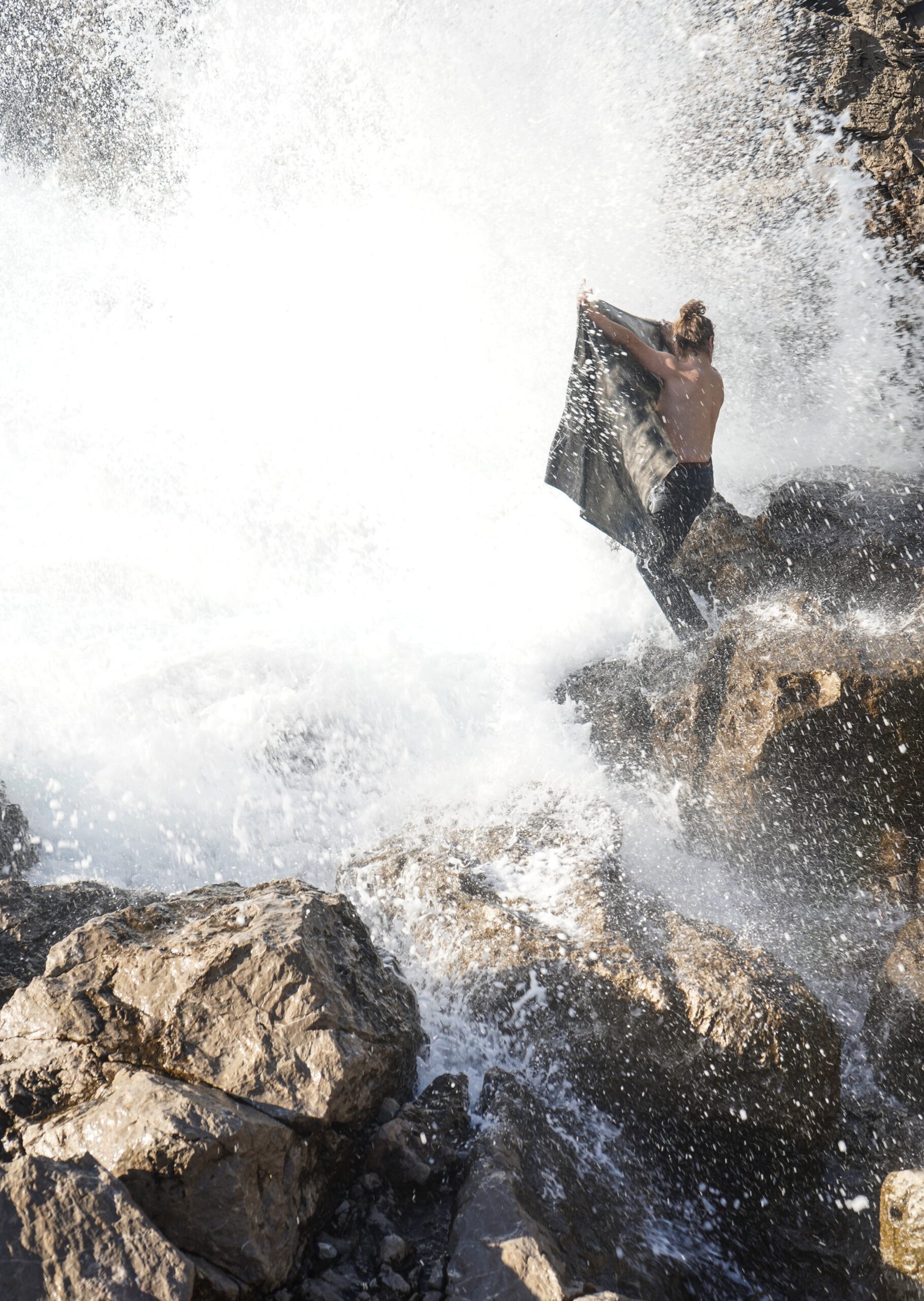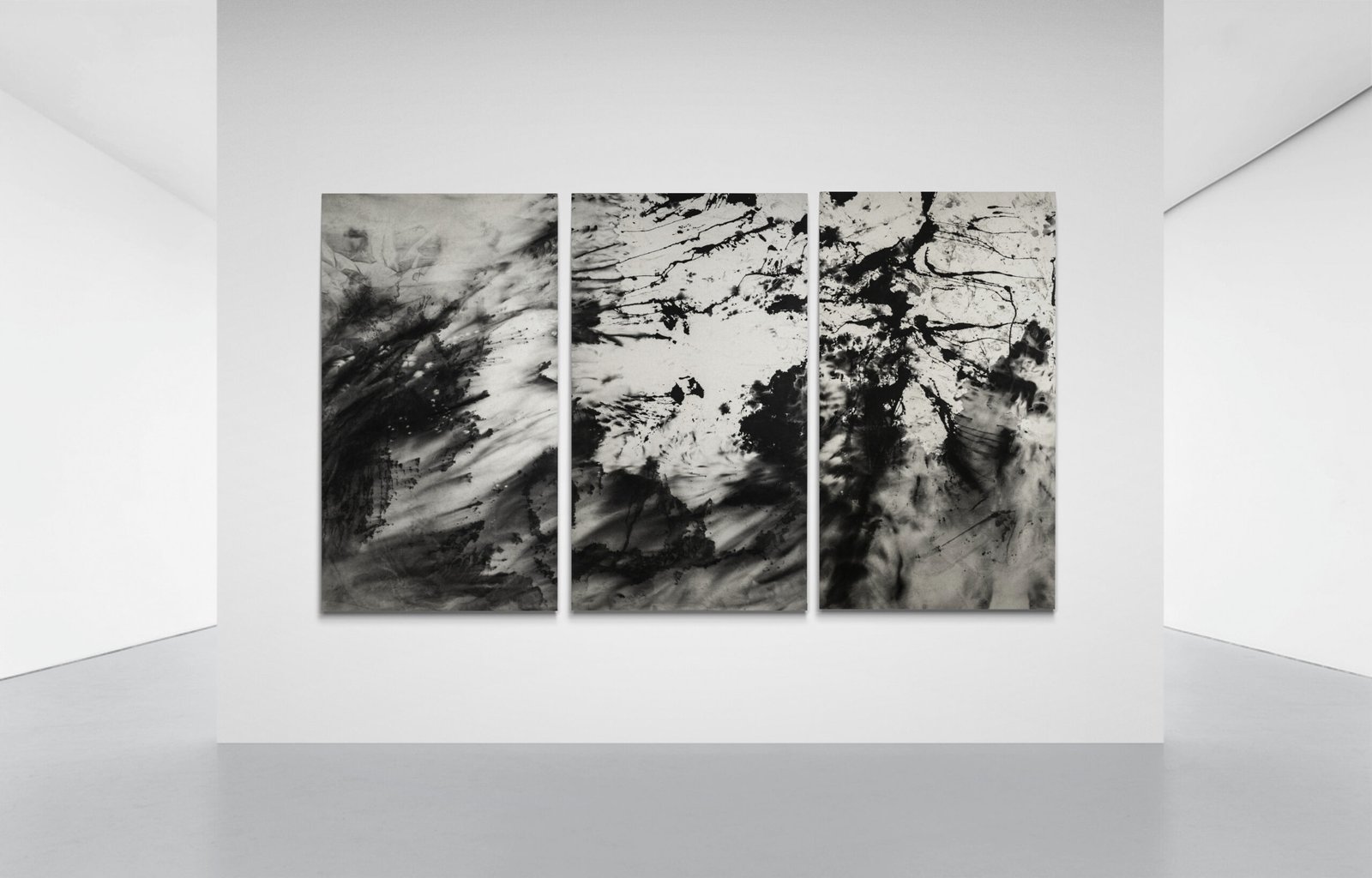Ecotopia
The sea at work, 2020 shooting Aimée Fleury
Photographs from the Nouvelle Vagues exhibition – Find out more about the exhibition
An inkjet of a cliff onto a canvas below.
The fall of the ink and the aspect of the ground form the imprint of this vertical earth which captures from the mountain its vertigo and its fall, its geological time and its limitless space.
The realization of the canvas is as fast as the fall of a dozen meters that put a few drops of coal mixed with water.
Before being a work of art, Ecotopia is the result of many walks, alone or with friends through the mountains. Nights spent living in nature, under the stars, warmed by a campfire.
Cliffs climbed for hours on end, only to have an ink jet cover a canvas below in a few seconds.
Except for the linen canvas itself, the materials that make it up come from walking, the ink is created after nights spent outside, with the crushed ashes of the wood fire, to which is added a sap serving as a binder.
The fertile mountain gives birth to the substrate which is deposited on the canvas, the wood which grows on it becomes charcoal, then ink.
English vocal introduction:
Workshop view.
“Vue d’atelier” is a video produced in 2019 that shows footage filmed during the creation of the Ecotopia works. Based on the concept that nature is a workshop in itself, an immersive space where we can collaborate with the environment, the video is accompanied by a specially composed soundtrack. It presents experiences, both collective and individual, including walks and treks in various natural environments such as the mountains, the sea and the forest. This video is a key element in understanding the essence of Ecotopia and immersing oneself in the work.
Video Vue d’atelier, 2020
New Wave
In 2022, at the Palazzo Saluzzo Paesana, under the curatorial direction of Enrico Bandini from Turin, a monographic exhibition was dedicated to Ecotopia, under the name “Nouvelle Vague”.
Photographs from the Nouvelle Vagues exhibition – Find out more about the exhibition
Photographs of the Thorong pass
Ecotopia’s first walk, and not the least, took place in 2016 in Nepal, on a solo trek around the Annapurna range, the second largest massif in the Himalayas.
After several days of preparation in the town of Phokara, I finally found the elements needed to create the canvas at the top of Thorong Pass: the linen canvas itself, a mortar, a sieve and, of course, the equipment needed for a high-mountain trek.
A fortnight’s hike into the heart of the mountains, canvas in the bag. The day after an evening around a log fire, I crushed coal to make ink.
A thousand cliffs, waterfalls and encounters took place on this walk.
On the tenth day, I arrived at the Thorong Pass base camp, at 4500 m. A thousand meters still separated me from the pass at 5500 m, and the day was to be an 8-hour walk, with around 50% oxygen, every step a trial and a pleasure at the same time.
To add to the difficulty of this grueling walk, I had the funny idea of climbing the highest point I could find to throw in the charcoal mixed with a little water.
The group of friends I’d joined two or three days earlier couldn’t wait for me, for fear of arriving during the night, or being stranded at the summit.
I’d already been carrying this canvas and the jars of powdered coal with me for ten days. I couldn’t give up now.
Slightly above the High Camp at around 5000 m, after already two long hours of walking, I saw a cliff overlooking the whole valley.
With the canvas under the cliff, I climb as best I can up this great rock. A few snowflakes begin to fall, the first since the start of the trek. I have the feeling that the mountain is trying to speak.
For the Nepalese, Annapurna is the abode of Shiva. I’ve often liked to think that these canvases capture fragments of Shiva herself.
Balancing in the void, alone for miles around, and not without difficulty, I managed to throw this ink.
I often feel like it’s all for nothing. Here’s an ink stain I could have made in my living room ten thousand kilometers away.
But there’s more to this canvas than just spots assembled in a certain order. It’s even more than my journey, my walk, my climb, my performance, it’s something else than my own singularities, my sensibility and my style. It’s not about me.
I’m simply a pretext, a Sherpa from the mountains, who brought her ink and canvas so that she could paint herself and tell us all about it through her forms.
I gently fold the canvases, and continue the journey under the snow.
Ecotopia continued in France with mountain climbing in the Mercantour massif and in the no less perilous southern pre-Alps.
Vision of the sublime in Kant, the mountain exceeds the capacity of the human mind to think it, to represent it. This is how the artist’s gesture disappears to let its formal singularities express themselves.
With a meditative Zen élan, she recalls the approach of calligraphers seeking a sense of emptiness in their gestures.
Performative conquest of a summit, the paintings of Ecotopia become a strong synthesis between walking in nature, climbing cliffs and the mountain itself.
There are many places among these mountains that I call Workshops, not to consider them as places where the artist masters the production process of his works, but rather as places where the mountain works, makes work day after day. I myself am just passing through, coming back, living there for a few days.
Once again, I am a pretext, a tool that nature uses as it sees fit to produce its works.
While the technique is reminiscent of dripping ink onto canvas, it differs from, and even opposes, what the work captures.
Whereas dripping captures the artist’s energy, dynamism and presence, Ecotopia is more of a retreat, making way for the environment. If traces of gesture appear, they are only residual.
At the end of the mountains, the sea. In 2019, Ecotopia continues to listen to nature as it explores the rocky shores that form the boundary between land and sea. In a gesture similar to that of the mountain, a throw of ink from a plumb point on a canvas placed on the shore, flows and takes its imprint.
The sea in turn comes to the rhythm of the waves, participating in the design of the shoreline, covering it, diluting it, sometimes violating it. The canvas becomes a collaboration between land and sea.
In each canvas, all that remains of the artist is his walking body, penetrated by the nature that surrounds him. The canvas is in a way its withdrawal, its disappearance. These choices seem important, this mountain or that, this shore or that, but they’re not. The artist withdraws from the forefront of the work, participating, like the viewer, only insofar as he recognizes himself in nature.
Coincidentally, the first of these canvases inexorably reveal the outline of a wave.
Books and publications about Ecotopia
The Ecotopia edition contains other paintings and texts, including Act 3, paintings created around a campfire in the wilderness. You can also request a catalog via a form in the online store.
